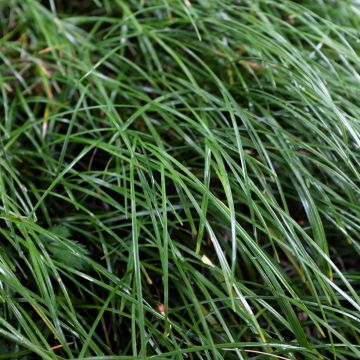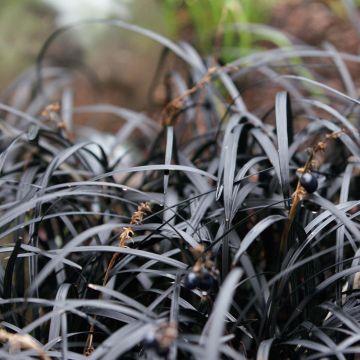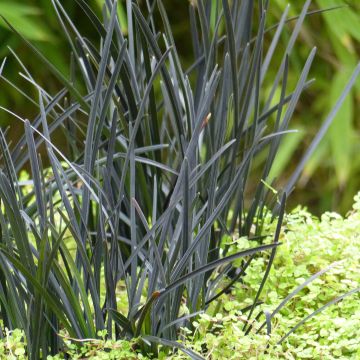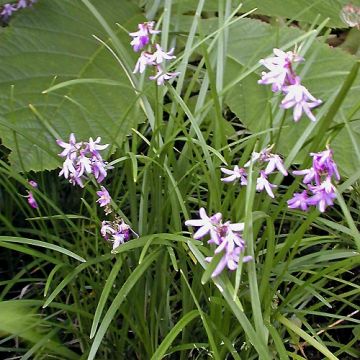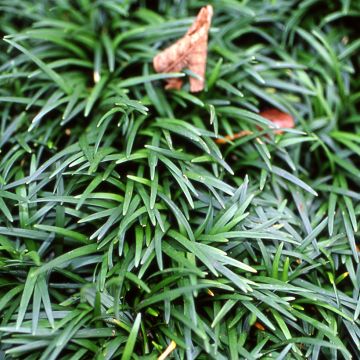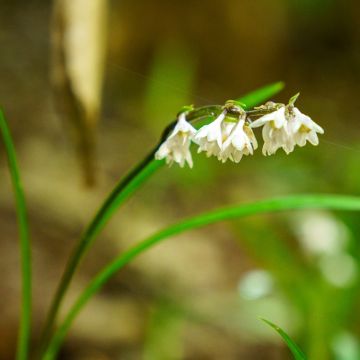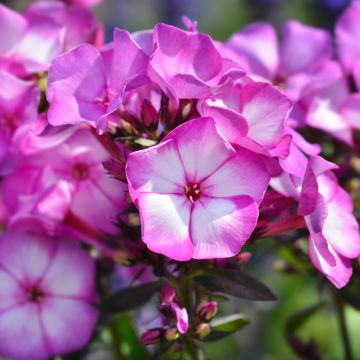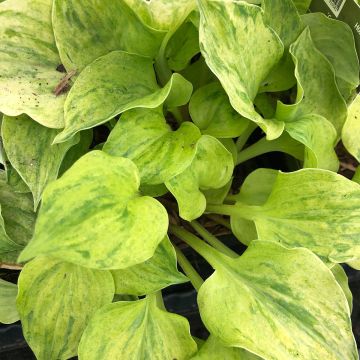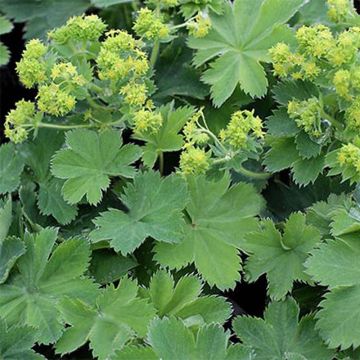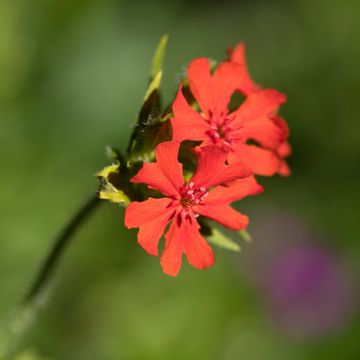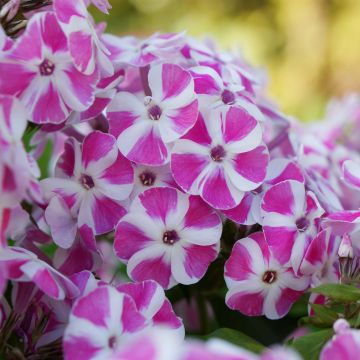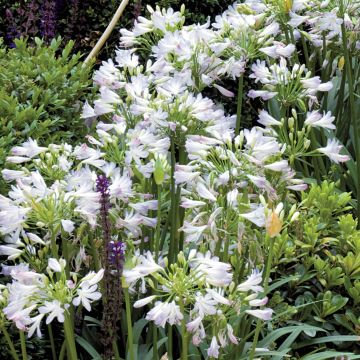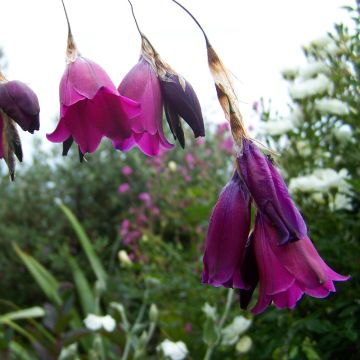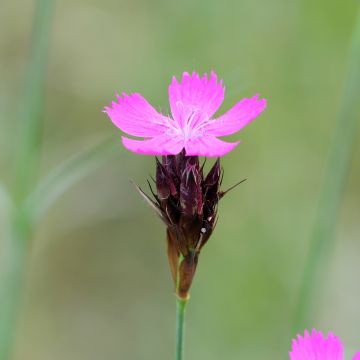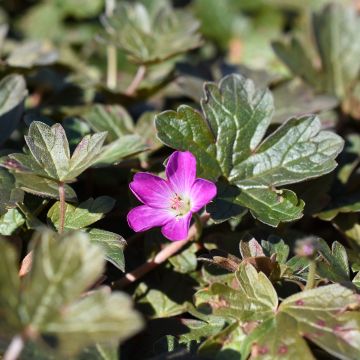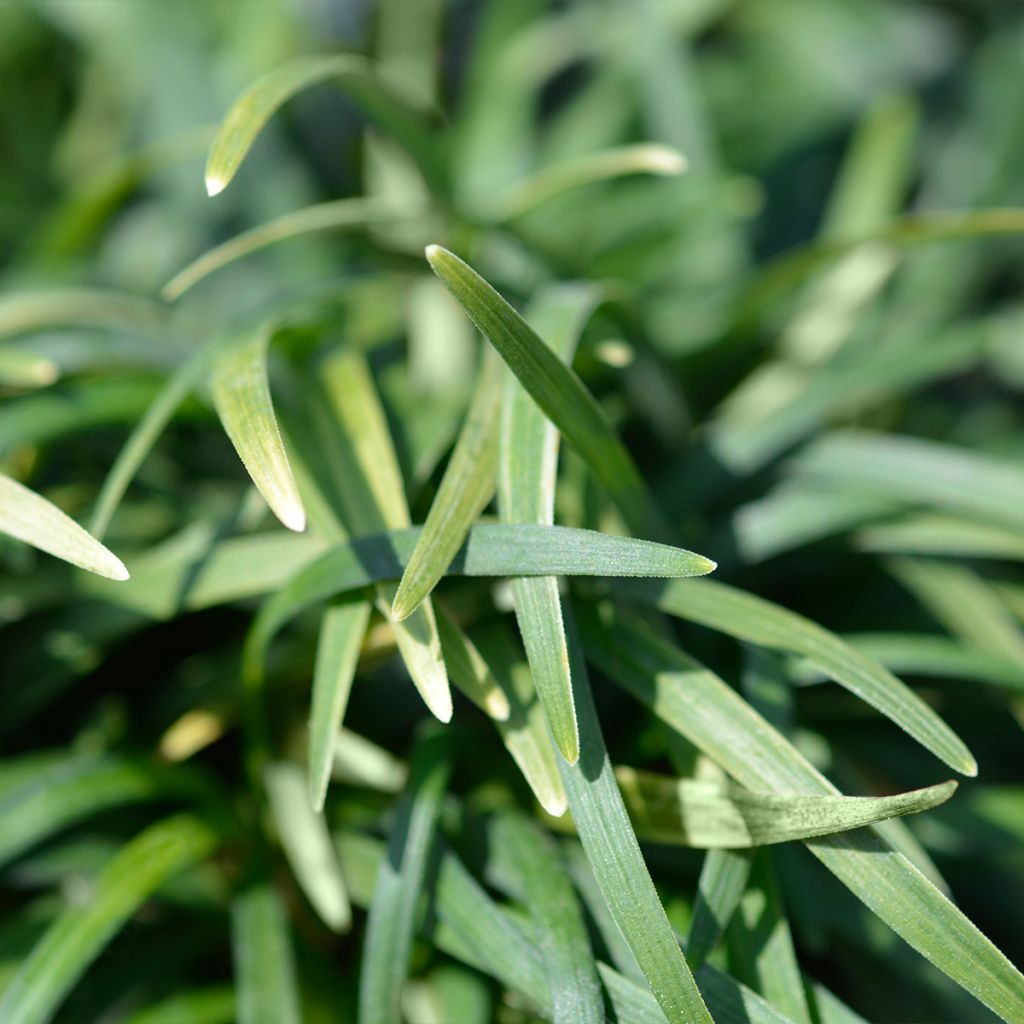

Ophiopogon japonicus Minor - Barbe de serpent ou Herbe aux turquoises
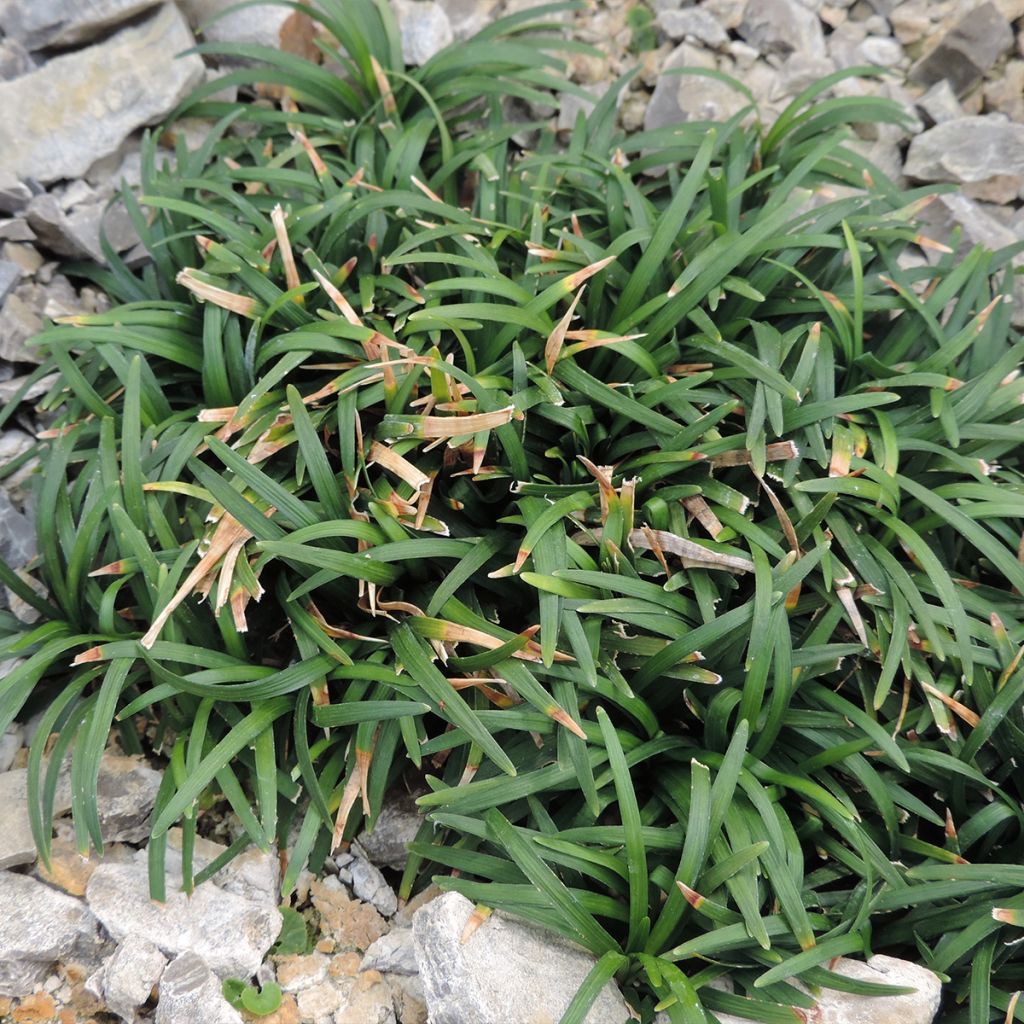

Ophiopogon japonicus Minor - Barbe de serpent ou Herbe aux turquoises
Ophiopogon japonicus Minor
Ophiopogon japonicus Minor
Mondo Grass, Fountain Plant, Monkey Grass, Snake's beard
This item cannot be shipped to the selected country
Delivery charge from €5.90
Delivery charge from €5.90
More information
Schedule delivery date,
and select date in basket
This plant carries a 12 months recovery warranty
More information
We guarantee the quality of our plants for a full growing cycle, and will replace at our expense any plant that fails to recover under normal climatic and planting conditions.
From €5.90 for pickup delivery and €6.90 for home delivery
Express home delivery from €8.90.
From €5.90 for pickup delivery and €6.90 for home delivery
Express home delivery from €8.90.
Does this plant fit my garden?
Set up your Plantfit profile →
Description
Ophiopogon japonicus 'Minor', also known as Snake's Beard, is an elegant perennial recognized and sought after for its ground covering habit. With its persistent and low-growing foliage, this variety finds its uses by forming a dense mat under trees, along paths or in non-trodden, partially shaded areas of the garden. Its grass-like foliage, of a shiny dark green, is adorned in late summer with discreet white flowers, and then with pretty berries of a surprising violet-blue, which earned it the name "herb with turquoise". It also grows well in containers, where it serves as a backdrop for flowering plants. Easy to grow, it thrives in light, moist, humus-rich, slightly acidic soil, in non-scorching sun.
Ophiopogon japonicus 'Minor' is a dwarf form of this stoloniferous perennial with trailing tuberous roots (rhizomes), native to Japan and China. It belongs to the lily family. This plant grows in small, particularly dense, spreading clumps, barely exceeding 10cm (4in) in height, and spreads quite slowly, without any theoretical limit. The growth of this 'Minor' form is nevertheless slightly faster than that of the species Ophiopogon japonicus. The foliage generally persists throughout the year, but it can be destroyed during particularly harsh winters without endangering the plant. This grass-like plant is composed of ribbon-like, leathery leaves of a beautiful shiny dark green. The flowering takes place in July-August, in the form of discreet inflorescences, small whitish bells, similar to those of lily of the valley, carried by short stems that do not exceed the foliage. They give way to ellipsoidal fruits, very decorative, the size of a pea, of turquoise-blue colour, which persist for long weeks. Caution: the berries are toxic if ingested. Once well established, this perennial requires no maintenance.
Robust and quite hardy, Ophiopogon japonicus 'Minor' has a long lifespan, and its ease of cultivation makes it often planted in gardens. Its main enemy remains limestone. Plant Ophiopogon 'Minor' in semi-shade, in a rich, light and moist soil. It fears excessively dry soils. Unlike grass, it does not tolerate trampling, so plant it along borders of flower beds or at the base of trees, on the edge of woodlands, in fresh rockeries, or between paving stones. It easily integrates into the design of Japanese gardens as a very low ground cover at the front of a flower bed, in association with graphic plants such as: Lilyturf (Liriope muscari), semi-shade Japanese Forest Grass (Hakonechloa macra), or evergreen ferns, for example.
Report an error about the product description
Flowering
Foliage
Plant habit
Botanical data
Ophiopogon
japonicus
Minor
Lilliaceae
Mondo Grass, Fountain Plant, Monkey Grass, Snake's beard
Southeast Asia
Other Ophiopogon
Planting and care
Ophiopogon japonicus 'Minor' is easy to grow, in any fresh soil, rich in humus, without limestone and in semi-shaded exposure. With correct hardiness (-10, -15°C (5°F)), although its foliage can be damaged by the cold, it will thrive more in regions with mild winters. Once well established, it also offers good drought resistance. During periods of severe cold, you can cover the clump with a layer of dead leaves, but only for a short period of a few days otherwise the foliage suffers from confinement. If the foliage turns brown due to the cold, do not remove it, as it protects the plant's stump. While it establishes, carefully weed and water if necessary. Make sure to protect young plantings from slugs and snails in the spring. Once well established, this Ophiopogon requires no maintenance.
In the ground, plant Ophiopogon japonicus 'Minor' in scattered clumps or in masses of 8 to 10 plants per square metre, spaced 20 to 30cm (8 to 12in) apart depending on the size and spread at maturity, for a beautiful decorative ground cover effect all year round in mild climates. In heavy soils, incorporate coarse sand or gravel to improve drainage. Clean the soil well. Dig a hole 2 to 3 times wider than the root ball. Plant in a mixture of extracted soil enriched with compost. Lightly tamp down and water generously.
In pots, the substrate should be very well-draining to prevent moisture from stagnating at the roots. At the bottom of the container, spread a good layer of drainage (gravel or clay pellets). Plant in a rich mixture of potting soil, loam, heath soil, and 1/3 coarse sand, and water. In colder regions, protect it from heavy frosts during the winter by keeping it in a greenhouse.
Planting period
Intended location
Care
This item has not been reviewed yet - be the first to leave a review about it.
Summer flowering perennials
Haven't found what you were looking for?
Hardiness is the lowest winter temperature a plant can endure without suffering serious damage or even dying. However, hardiness is affected by location (a sheltered area, such as a patio), protection (winter cover) and soil type (hardiness is improved by well-drained soil).

Photo Sharing Terms & Conditions
In order to encourage gardeners to interact and share their experiences, Promesse de fleurs offers various media enabling content to be uploaded onto its Site - in particular via the ‘Photo sharing’ module.
The User agrees to refrain from:
- Posting any content that is illegal, prejudicial, insulting, racist, inciteful to hatred, revisionist, contrary to public decency, that infringes on privacy or on the privacy rights of third parties, in particular the publicity rights of persons and goods, intellectual property rights, or the right to privacy.
- Submitting content on behalf of a third party;
- Impersonate the identity of a third party and/or publish any personal information about a third party;
In general, the User undertakes to refrain from any unethical behaviour.
All Content (in particular text, comments, files, images, photos, videos, creative works, etc.), which may be subject to property or intellectual property rights, image or other private rights, shall remain the property of the User, subject to the limited rights granted by the terms of the licence granted by Promesse de fleurs as stated below. Users are at liberty to publish or not to publish such Content on the Site, notably via the ‘Photo Sharing’ facility, and accept that this Content shall be made public and freely accessible, notably on the Internet.
Users further acknowledge, undertake to have ,and guarantee that they hold all necessary rights and permissions to publish such material on the Site, in particular with regard to the legislation in force pertaining to any privacy, property, intellectual property, image, or contractual rights, or rights of any other nature. By publishing such Content on the Site, Users acknowledge accepting full liability as publishers of the Content within the meaning of the law, and grant Promesse de fleurs, free of charge, an inclusive, worldwide licence for the said Content for the entire duration of its publication, including all reproduction, representation, up/downloading, displaying, performing, transmission, and storage rights.
Users also grant permission for their name to be linked to the Content and accept that this link may not always be made available.
By engaging in posting material, Users consent to their Content becoming automatically accessible on the Internet, in particular on other sites and/or blogs and/or web pages of the Promesse de fleurs site, including in particular social pages and the Promesse de fleurs catalogue.
Users may secure the removal of entrusted content free of charge by issuing a simple request via our contact form.
The flowering period indicated on our website applies to countries and regions located in USDA zone 8 (France, the United Kingdom, Ireland, the Netherlands, etc.)
It will vary according to where you live:
- In zones 9 to 10 (Italy, Spain, Greece, etc.), flowering will occur about 2 to 4 weeks earlier.
- In zones 6 to 7 (Germany, Poland, Slovenia, and lower mountainous regions), flowering will be delayed by 2 to 3 weeks.
- In zone 5 (Central Europe, Scandinavia), blooming will be delayed by 3 to 5 weeks.
In temperate climates, pruning of spring-flowering shrubs (forsythia, spireas, etc.) should be done just after flowering.
Pruning of summer-flowering shrubs (Indian Lilac, Perovskia, etc.) can be done in winter or spring.
In cold regions as well as with frost-sensitive plants, avoid pruning too early when severe frosts may still occur.
The planting period indicated on our website applies to countries and regions located in USDA zone 8 (France, United Kingdom, Ireland, Netherlands).
It will vary according to where you live:
- In Mediterranean zones (Marseille, Madrid, Milan, etc.), autumn and winter are the best planting periods.
- In continental zones (Strasbourg, Munich, Vienna, etc.), delay planting by 2 to 3 weeks in spring and bring it forward by 2 to 4 weeks in autumn.
- In mountainous regions (the Alps, Pyrenees, Carpathians, etc.), it is best to plant in late spring (May-June) or late summer (August-September).
The harvesting period indicated on our website applies to countries and regions in USDA zone 8 (France, England, Ireland, the Netherlands).
In colder areas (Scandinavia, Poland, Austria...) fruit and vegetable harvests are likely to be delayed by 3-4 weeks.
In warmer areas (Italy, Spain, Greece, etc.), harvesting will probably take place earlier, depending on weather conditions.
The sowing periods indicated on our website apply to countries and regions within USDA Zone 8 (France, UK, Ireland, Netherlands).
In colder areas (Scandinavia, Poland, Austria...), delay any outdoor sowing by 3-4 weeks, or sow under glass.
In warmer climes (Italy, Spain, Greece, etc.), bring outdoor sowing forward by a few weeks.

































